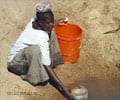An international team of researchers has created a global map that shows the proportion of malaria infected population at locations throughout the globe.
This development can act as a key tool to help in the control and elimination of the disease.For developing the map, the researchers used data from nearly 8000 local surveys of rates of infection by Plasmodium falciparum.
The map shows that areas where a high proportion of residents are infected are common in Africa, but the ratio is not uniform throughout the country.
However, lower prevalence levels are found in the Americas and Central and Southeast Asia, although pockets of intermediate and high transmission remain in some parts of Asia.
Malaria is one of the most common infectious diseases in the world.
Researchers, led by Simon Hay from the Department of Zoology at the University of Oxford, have shown that global malaria endemicity is substantially lower than would be predicted from inspection of historical maps.
Advertisement
The new map is a part of the Malaria Atlas Project and reflects the use of model-based geostatistics to incorporate data obtained across space and time.
Advertisement
And because of the statistical methods used to construct the new map, it is possible to quantify the uncertainty in the results.
"The state of the P. falciparum malaria world in 2007 represents an enormous opportunity for the international community to act. This cartographic resource will help countries determine their needs and serve as a baseline to monitor and evaluate progress towards interventional goals," said the authors.
The study is published in the latest edition of PLoS Medicine.
Source-ANI
ARU/L












